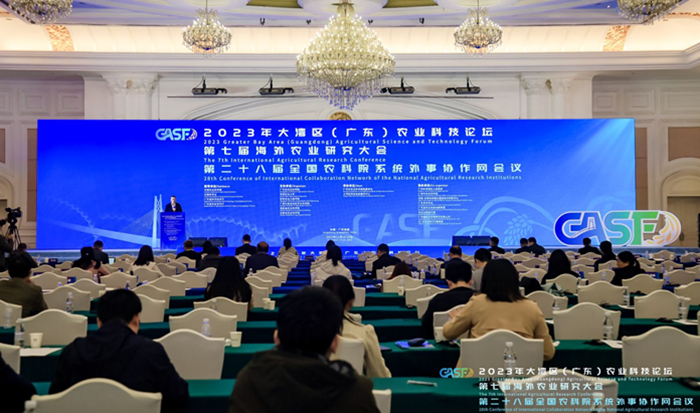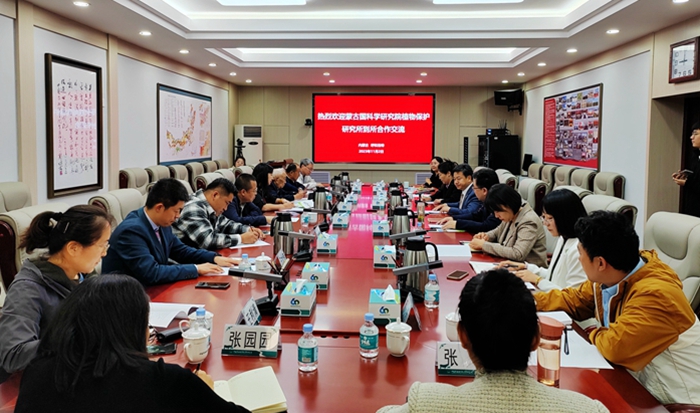Jute ( Corchorus olitorius L.) Nanocrystalline Cellulose Inhibits Insect Virus via Gut Microbiota and Metabolism
Researchers from the innovation team of utilization and biosynthesis of bioactive compounds in the Institute of Bast Fiber Crops, Chinese Academy of Agricultural Sciences (IBFC, CAAS), systematically studied the antiviral effect of nanocrystalline cellulose extracted from jute ( Corchorus olitorius L.) leaves via regulating gut microbiota and metabolism. The research was published online in ACS Nano .
It is well known that gut microbiota plays a significant role in modulating host development, metabolism, and immune functions. A growing body of research has shown that gut microbiota also exerts a substantial influence in host immune modulation to combat viral infection in humans and several vertebrate systems. The regulation of gut microbiota is one of the main function of natural polysaccharide. Researchers also found that the low-dose jute nanocrystalline cellulose (JNCC) clearly maintained the balance of key gut bacterial like Snodgrassella alvi and Lactobacillus Firm-4 in the bees treated with tetracycline, and reduced the toxicity caused by antibiotics in the previous study. As a result, one of the main areas of interest in JNCC is the modulation of gut microbiota against viral infection.
Researchers tested the function of NCC in antiviral utilizing honey bee as the model organism employing Israeli acute paralysis virus (IAPV), a typical RNA virus of honey bees. In both the lab and the field, researchers fed the IAPV-infected bees various doses of jute NCC (JNCC) under carefully controlled condition. Researchers found that JNCC can reduce IAPV proliferation and improve gut health. The metagenome profiling suggested that IAPV infection significantly decreased the abundance of gut core bacteria, while JNCC therapy considerably increased the abundance of the gut core bacteria Snodgrassella alvi and Lactobacillus Firm- 5 . It has been reported that S. alvi creates a biofilm on the wall of the gut ileum, which may function as a mechanical barrier to stop the pathogen invasion in bees in addition to activating immune system in bees. The previous study also showed that Lactobacillus may play a crucial role against viral infection in bees. Subsequent metabolome analysis further revealed that JNCC promoted the biosynthesis of fatty acids and unsaturated fatty acids, accelerated the purine metabolism. Uric acid, the final metabolite in purine metabolism, is an essential antioxidant for survival and makes a substantial contribution to longevity and immunity in mammals and insects. Finally, researchers found that and JNCC treatment indeed increased the expression of antimicrobial peptides (AMPs) and the genes involving in the Wnt and apoptosis signaling pathways against IAPV infection. These results highlighted that JNCC could be considered as a prospective candidate agent against viral infection.
This work was supported by National Natural Science Foundation of Hunan province, the Central Public-Interest Scientific Institution Basal Research Fund, and the Agricultural Science and Technology Innovation Program.
The paper link: https://doi.org/10.1021/acsnano.3c06824

Fig. The preparation of JNCC and its the antiviral effect by regulate gut microbiota.
By Deng Yanchun (dengyanchun@www.comparadata.com)
-
 Nov 24, 2023The 2nd Belt and Road International Nematology Symposium successfully held in Xi'an
Nov 24, 2023The 2nd Belt and Road International Nematology Symposium successfully held in Xi'an -
 Nov 24, 2023The 7th International Agricultural Research Conference Successfully Held in Guangzhou
Nov 24, 2023The 7th International Agricultural Research Conference Successfully Held in Guangzhou -
 Nov 21, 2023International Symposium on Sustainable Development of Natural Fibers Held in Hunan
Nov 21, 2023International Symposium on Sustainable Development of Natural Fibers Held in Hunan -
 Nov 21, 2023Institute of Grassland Research of CAAS promoted comprehensive cooperation with Institute of Plant Protection Research, Mongolia
Nov 21, 2023Institute of Grassland Research of CAAS promoted comprehensive cooperation with Institute of Plant Protection Research, Mongolia -
 Nov 09, 2023CAAS President Meets with IFPRI Director General
Nov 09, 2023CAAS President Meets with IFPRI Director General
